Camera battery died partway through uploading, so I lost the beginning photos, but will redo them, as they included fixing a blowout, two ways.
But I hope you find these photos helpful, especially in stuffing a form that is not large, open space (though those can cause their own problems.
The trick, as always (in my opinion, anyway) is to get enough stuffing in all the bits, starting with the narrowest first, like arms and legs, that the resulting form feels like an unpeeled, hard-boiled egg. Starting with the head, which I did for years, til I realized just how much stuffing loves itself, often resulted in either a floppy neck, or a line below the head or neck, as it hit the body. More flop. Not good.
Stuffing is interesting stuff. It likes to grab itself as you place more inside it, from the places you thought you had good and mashed-in. I like to use a 6" pair of curved hemostats, slightly open, to do the inserting and mashing, being careful to stay to the inside of the form bit with the curve of the hemostats, and to stay to the thickest part of the stuffing already in place, to push and prod and mash more down than most folks realize would fit inside a form. Letting your hemostat's curve face out into the fabric is just asking for a puncture. Ugh. Been there, done that, try really hard not to, anymore.
So, let's see what photos were uploaded from the bit I finished today.
OK, look at the body next to the right arm, and at the neck right above the body. See those lines? They will let your form bend at those areas, and while you can bead over it to the point that it might not bend, why do that, when you can....
Add teensy (less than dime-sized) bits of stuffing, sliding your hemostats along the outside of the form, inside the fabric, to the places that need a bit more. That won't work? Pull stuffing out til you get to the wonky, lined bits, then add new stuffing, packing each area like you packed the arms or legs, working first the arm area, then the neck area, and pushing that stuffing in good and tight from the center out. Turn the form over and check the other side for lines, too. Now, you have....
the neck without lines. Continue until you fill in the lines at both shoulders. Time to move below.
Making sure you have the area above the waist, and above your stuffing hole nicely and tightly packed, grab hold of it with your fingers, to keep it in place and to keep the new stuffing you are going to be adding to the tops of the legs from being grabbed by the stuffing already in place, in the chest. Remember, stuffing LOVES itself, so try to keep it away from the packed areas when adding new. If your grip is compromised, try a large pair (12" or larger" of smooth hemostats (without the teeth). Flea markets are a great place to find these cheaply. Just clip below the chest area and get to those legs...
Start with the leg furthest from your stuffing hole, and push the small bits (less than an inch worth) into place with a movement that takes the stuffing in, then down into the center of the stuffing already in the leg. Keep that curved end of the hemostats toward the center and down, rather than to either side.
You only THINK you have enough stuffing in there....check the next photo.
Yep, all this went in, straight into the center of the bit where the waist is, forcing the stuffing that is already in place to push out both front and back.
This is about the size of the gap you will see when you have enough stuffing.
Check her over for lines and soft places. Add more stuffing to the soft places and lined areas.
I have a small line at the left arm, where it meets the shoulder, from mashing the form while holding and stuffing. I wish I could remember to avoid this, as it pushes down the stuffing and creates a line that wasn't there, before. This is small enough to bead over, so I won't pull the stuffing out and restart (thank goodness!). Now to sew up the stuffing hole in her side.
I use Fireline 4# to sew up the sides of my forms, mainly because I detest making knots in other threads, and can use my handy-dandy thread burner from Beadsmith to heat the end of the Fireline, making a ball that acts like a knot. Just insert the line inside of the tip area, without touching the tip, and hold the button on the burner til the thread balls up like you want.
I start the thread inside an area that is machine-seamed, to give it more strength and to give that little knot a thicker place to grab.
Make a couple small stitches in the machine-stitched area, close together, and work toward the open area, after pushing the stuffing in and holding the hole as closed as you can.
I find using first long, then short stitches, and just getting the edges of the material to touch, keeps a strain off the fabric when using quilt-grade cotton. If you use a tighter weave cotton, then you can use stitches of all the same length. End by putting a few stitches into the other machine-stitched end, then a couple in the same place. Use that thread burner to both cut and melt the end next to the fabric. Be careful to not touch the fabric itself with the burner tip. You can also use the burner tip to burn away small bits of fluff that are sticking out or pulled through the fabric. Again, be careful to not touch the top of the burner to the fabric when doing this.
Here she is, in all her finished glory, just waiting for her face and some beads. She stands 6" high from her longest leg to the top of her head. and is the same at her widest place... Looks like she's ready for the dance, doesn't she?
As always, click on any photo to make it full size.
Happy beading AND stuffing, everyone!
Subscribe to:
Post Comments (Atom)

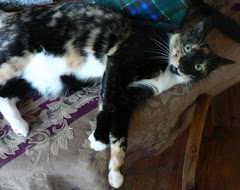
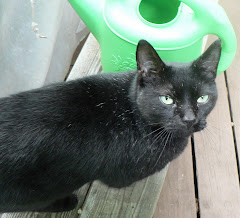
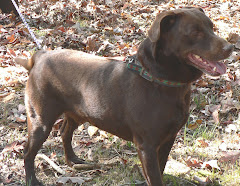
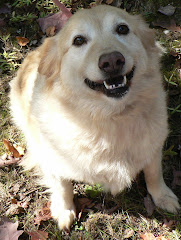




















































.png)






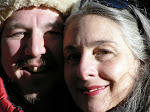

3 comments:
Wow....enjoyed this. Never thought of using the hemostat's.
As always, Master, thank you for the insight.
Catherine
Thank you, Catherine!! We can always learn new tricks, and I often learn from the newest of the new!!
HELLO from the far North. Lovely to hear from you. Your beading is as wonderful as always. The boot is fantastic looking. Love the Sharon Harry Solly marble kind of face. It is very nice. Hugs Judy
Post a Comment